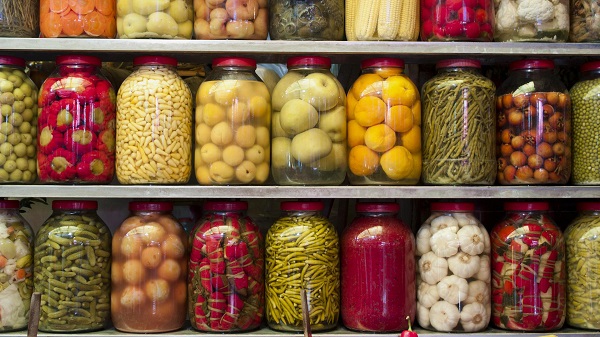I believe that the best foods are those born out of necessity.
Looking at that old rooster in the yard, one might conclude that the tough old bird will taste of chewy, tough game. But somewhere along the line, a very hungry person in France decided to braise that old bird in red wine (along with bacon and other goodness), creating the beloved dish now known as coq au vin.
The truth of the matter is most of our favorite comfort foods are not haute cuisine. We learn to make do with what we have, and more likely, what we don’t have.
As a southerner, I take comfort in a form of necessity food that comes through pickling and preserving. When I was growing up, my great-grandmother, who lived well past 100, recounted stories of the old days, when folks would “save the season” by pickling and preserving the summer and fall harvest to ensure the food supply would last throughout the year ahead.
Of course, pickling is not just a feature of Southern cookery — it’s a global preservation method dating back thousands of years.
On the most basic level, pickling is defined as soaking foods in solutions to prevent spoilage. While many of us tend to associate vinegar as the primary form of pickling, there’s also a common method of using brines that encourage fermentation, or good bacteria growth, to prevent and stave off bad forms of bacteria from affecting the food. If you’ve ever had Korean kimchi, you’ve enjoyed this preservation method.
For Americans, the pickled cucumber, or just pickle, is the most common item we associate with vinegar-based preservation. And rightfully so. There’s rarely ever a road trip that goes by where I don’t search the convenience station for a Van Holten Pickle-In-A-Pouch, perfectly preserved in a plastic bag full of salty, tangy vinegar brine. Darn, that got my mouth watering!
Though the cucumber might be king in America, pickling is used throughout the world in nearly every culture — allowing raw foods like cabbage, pig’s feet, eggs, fish, and corned beef to be transformed into delicacies.
For the home cook, pickling and preserving can be somewhat of a daunting process. But you can actually have a whole lot of fun and pickling success with a quick trip to your local farmers market and less than an hour in the kitchen.
For the purposes of this piece, we’re focusing our efforts on vinegar-based pickling. You can move on to fermentation-based pickling after you learn the fundamentals.
I’ve outlined a few starter recipes below, some of which you can enjoy in just a day’s time.
Icebox Dill Pickles
Whenever you open up my refrigerator at home, you will find some sort of pickled concoction. Pickling vegetables is somewhat like a science experiment — once you perfect the brine, it’s just a matter of adding jolts of flavor with fresh herbs, aromatics, and spice. These pickles are prepared quickly and can be stored safely in the fridge for up to a month or so. It’s best to use cucumbers just pulled from the vine (ask the farmer who harvested them) to keep the pickles nice and crisp. Let’s get real, nobody wants a soggy pickle! These make a healthy snack, a nice addition to a crudité or antipasto platter, or a delicious topping for a burger.
Prep Time: 15 mins, plus 3 days for chilling.
Ingredients
- 1 cup white vinegar (5% acidity)
- 1½ tsp. sugar
- 2¼ tsp. kosher salt
- 5 whole black peppercorns
- 6 garlic cloves
- 1¼ lb. Kirby cucumbers, cut into ½ -inch-thick slices
- ½ jalapeño pepper, cut in half and seeded
- 2 Tbsp. fresh dill weed, coarsely chopped
- 2 (1-pt.) glass canning jars
Directions
- Bring first 4 ingredients and ¾ cup water to a boil in a small saucepan over medium-high heat. Reduce heat to low, and simmer 5 minutes.
- Meanwhile, smash garlic cloves using the flat side of a knife.
- Divide cucumber slices, jalapeño pepper, dill weed, and smashed garlic between the two glass canning jars. Tightly pack ingredients, layering to distribute garlic and dill weed throughout jars, and fill to ½ inch from top.
- Pour hot vinegar mixture over cucumber mixture, ensuring that all ingredients are covered with liquid. Cover at once with lids and screw on bands.
- Chill 3 days before serving to allow flavors to meld.
- (continue reading)
